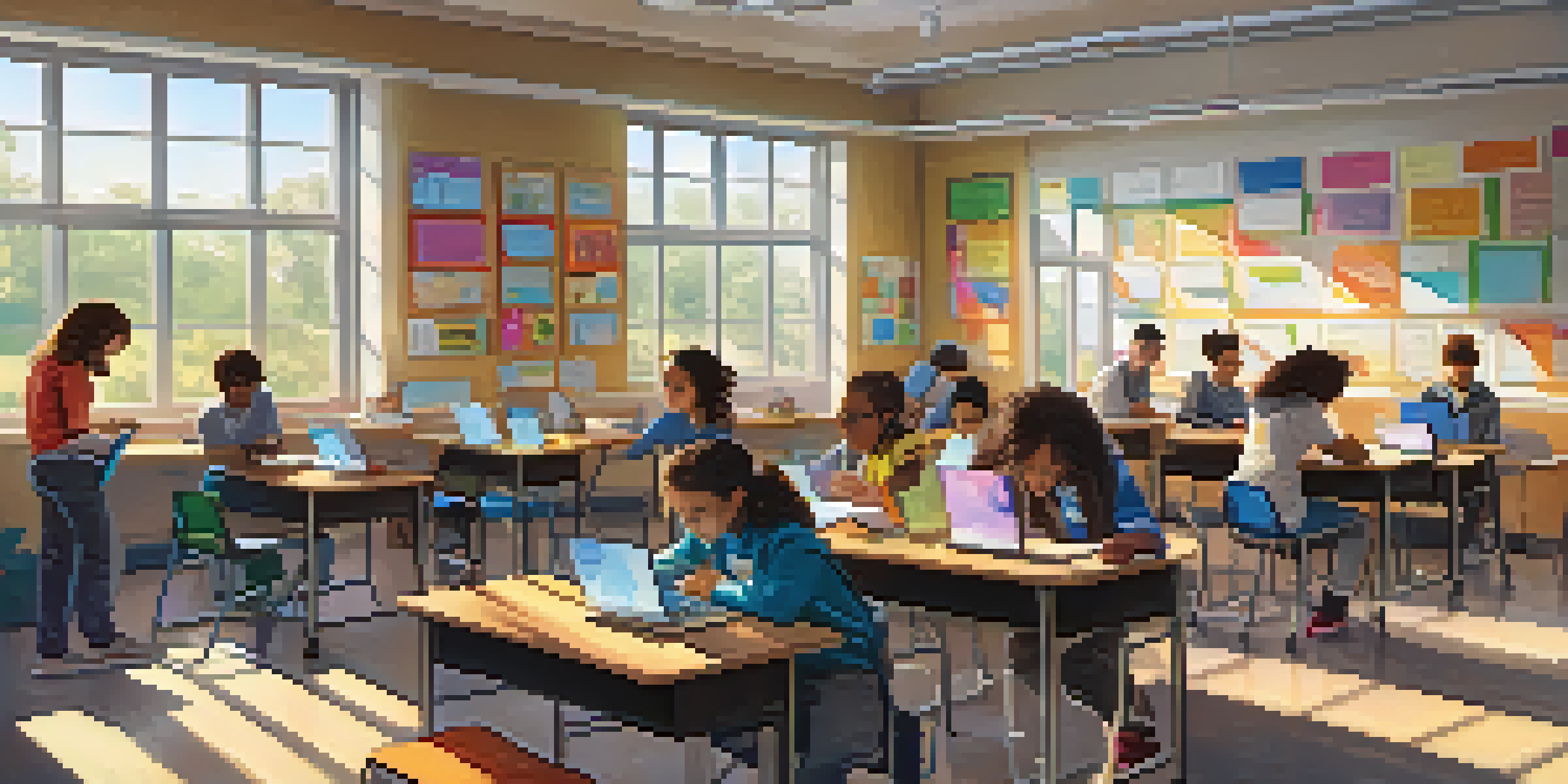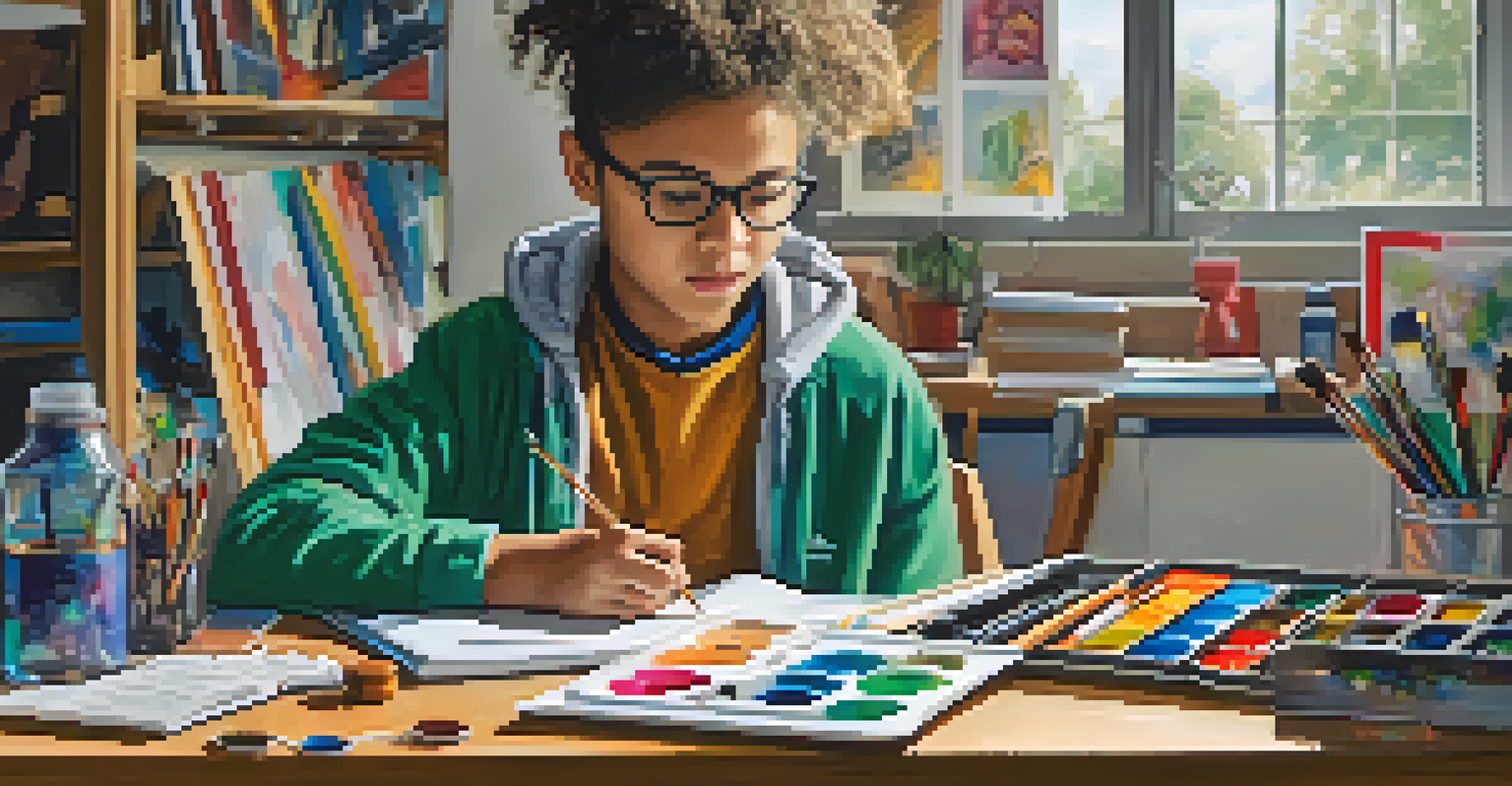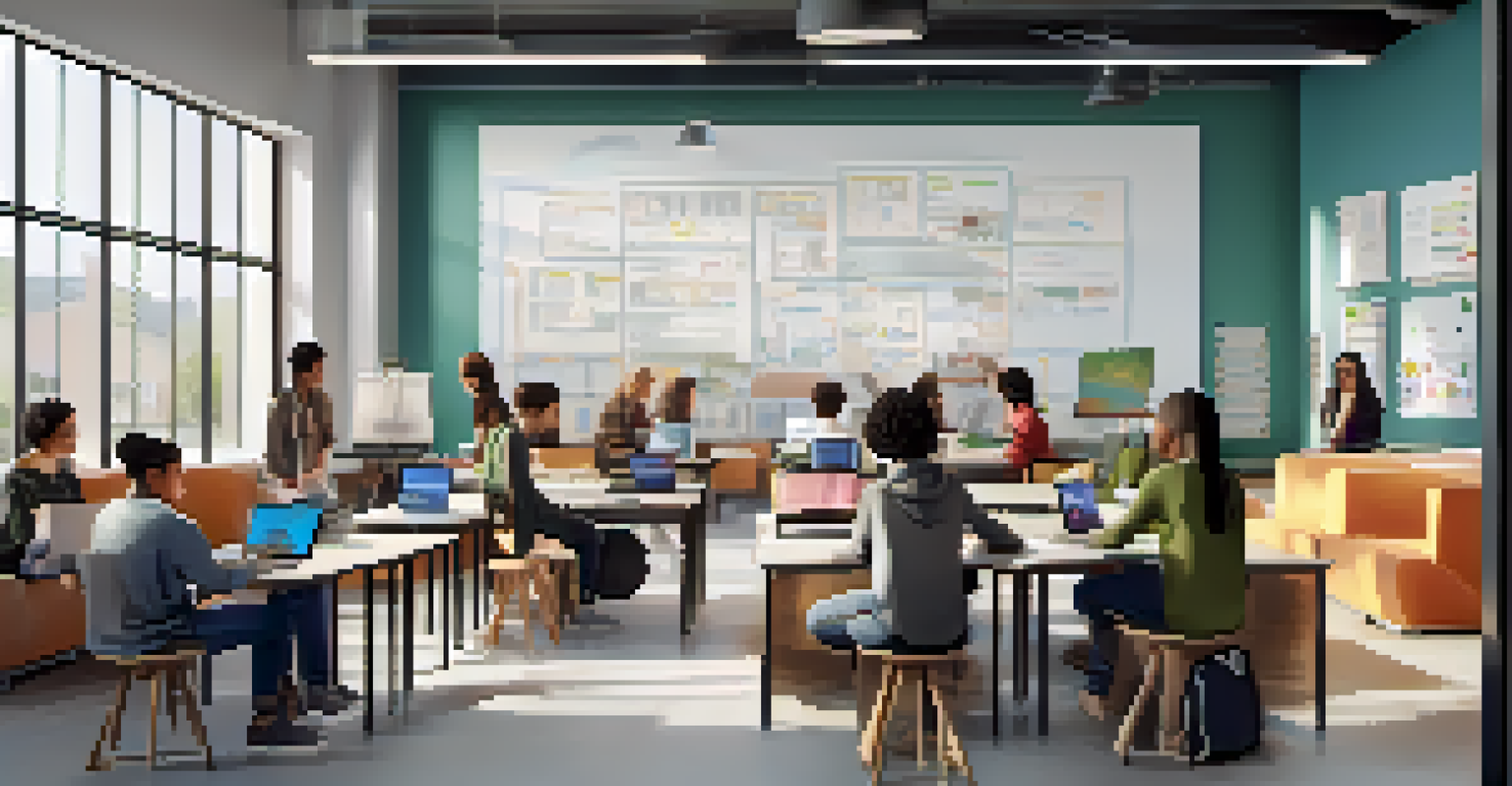Personalized Learning and Its Role in Enhancing Creativity

Understanding Personalized Learning in Education
Personalized learning tailors education to fit the unique needs of each student. This approach recognizes that every learner has different strengths, interests, and learning styles, making it essential for educators to adapt their teaching methods. By focusing on individual needs, personalized learning promotes an environment where students can thrive at their own pace.
Personalized learning is not a one-size-fits-all approach. It’s about understanding each student’s unique strengths and challenges, and tailoring the learning experience accordingly.
Imagine a classroom where students choose projects based on their passions instead of a one-size-fits-all curriculum. This flexibility allows them to explore subjects deeply, fostering engagement and ownership of their learning. Such an approach not only increases motivation but also helps students develop critical thinking skills.
In this educational landscape, technology plays a pivotal role, providing tools and resources that support personalized learning. From adaptive learning platforms to online resources, these innovations ensure that students have access to materials tailored to their interests and skills, further enhancing their educational experience.
The Connection Between Personalized Learning and Creativity
Creativity flourishes in environments that encourage exploration and self-expression. Personalized learning supports this by allowing students to pursue projects and topics that resonate with them. When learners are passionate about what they study, they are more likely to think outside the box and innovate.

For instance, a student interested in art can integrate their passion for painting into science lessons by creating visual representations of scientific concepts. This blend of disciplines not only enhances their understanding but also nurtures creativity. The freedom to connect different subjects promotes a holistic approach to learning.
Personalized Learning Enhances Engagement
By tailoring education to individual interests and strengths, personalized learning fosters greater student motivation and ownership of their learning.
Moreover, personalized learning fosters a mindset of experimentation and risk-taking. Students feel safe to share bold ideas and try unconventional solutions, knowing that their unique perspectives are valued. This supportive atmosphere is crucial for cultivating creative thinkers who can tackle real-world problems.
Implementing Personalized Learning Strategies
To effectively implement personalized learning, educators can start by assessing each student's interests and learning preferences. This initial step helps teachers identify the best ways to engage their students. Surveys, interviews, or informal conversations can provide valuable insights into what excites each learner.
Creativity is thinking up new things. Innovation is doing new things.
Once teachers have a clear understanding of their students, they can design tailored lesson plans and activities that cater to individual needs. For example, incorporating project-based learning allows students to dive into topics that interest them while developing critical skills. This hands-on approach not only enhances engagement but also encourages creativity.
Lastly, ongoing assessment and feedback are vital in a personalized learning environment. By regularly checking in with students and adjusting strategies based on their progress, educators can ensure that each learner continues to grow creatively and academically. This adaptability keeps the learning experience dynamic and relevant.
The Role of Technology in Enhancing Personalized Learning
Technology serves as a powerful ally in the realm of personalized learning. Online platforms and educational software can adapt to each student's learning pace and style, offering tailored resources and assessments. This individualized approach helps learners stay engaged and challenged without feeling overwhelmed.
For example, adaptive learning programs can analyze a student's performance in real time, adjusting the difficulty of tasks to match their abilities. This ensures that students are consistently working at their optimal level, facilitating both understanding and creativity. With technology, the possibilities for personalized learning are virtually limitless.
Technology Supports Custom Learning
Innovative tools and platforms enable adaptive learning experiences that cater to each student's unique pace and style.
Furthermore, technology provides avenues for collaboration and sharing ideas among students. Online discussion forums, collaborative projects, and virtual classrooms create spaces where learners can exchange thoughts and inspire each other. This sense of community enhances creativity as students build on one another's ideas and perspectives.
Challenges in Implementing Personalized Learning
Despite its many benefits, implementing personalized learning can present challenges. One significant hurdle is the need for teacher training, as educators must be equipped with the skills to tailor their approaches effectively. Professional development programs can help teachers gain the necessary knowledge and confidence to embrace personalized learning.
Another challenge lies in resource allocation, as schools may struggle to provide the technology and materials needed for personalized learning. Budget constraints can limit access to adaptive learning tools, making it difficult for educators to fully implement individualized strategies. Finding creative solutions and seeking partnerships with tech companies can help bridge this gap.
Lastly, ensuring that all students receive equal opportunities in a personalized learning environment is crucial. Teachers must be mindful of equity and inclusivity, ensuring that every learner has access to resources and support. By creating a balanced approach, educators can foster creativity among all students, regardless of their backgrounds.
Measuring Success in Personalized Learning
Measuring the success of personalized learning requires a shift in traditional assessment methods. Instead of solely relying on standardized tests, educators should consider a variety of evaluation techniques that capture students' creative growth. Portfolios, presentations, and self-assessments can provide a more comprehensive view of a learner's progress.
For instance, a student might showcase their understanding of a concept through a creative project, demonstrating not only knowledge but also innovation. These alternative assessments allow students to express their learning in ways that resonate with them, fostering a deeper connection to the material.
Creativity Thrives in Personalized Settings
Personalized learning environments encourage exploration and risk-taking, essential for nurturing creativity and critical thinking among students.
Additionally, gathering feedback from students about their learning experiences can offer valuable insights. By understanding what aspects of personalized learning resonate most with them, educators can refine their approaches and enhance creativity. This ongoing dialogue between teachers and students is essential for continuous improvement.
The Future of Personalized Learning and Creativity
As education continues to evolve, the future of personalized learning looks promising. With advancements in technology and a growing emphasis on individualized education, we can expect to see more innovative approaches that nurture creativity. Schools will likely adopt more flexible curricula that allow students to explore their interests deeply.
Moreover, the integration of interdisciplinary studies will become more prevalent, encouraging students to draw connections between different subjects. This holistic approach not only enhances understanding but also fosters creative thinking, preparing students for a rapidly changing world. The ability to adapt and innovate will be essential for future success.

Ultimately, personalized learning will empower students to take charge of their education, cultivating a generation of creative thinkers. By embracing diversity in learning styles and interests, we can create an educational landscape that not only values knowledge but also celebrates creativity as a vital component of the learning journey.